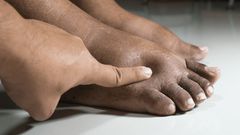Explosive plyometric workouts are rapidly becoming a favorite among Nigerians eager to level up their strength, agility, and overall health. This high-intensity form of training is rooted in combining strength with rapid movement, transforming regular exercises into power-packed sessions designed to produce fast, potent bursts of energy—even when tired. This approach doesn’t just get the heart racing for brief, intense moments, it also cranks up your metabolism, fuels calorie burn, and leads to durable, functional muscle growth for daily living. As the fitness culture in Lagos, Abuja, Accra, and across West Africa grows, more people are discovering the life-changing benefits of plyometric power training, whether their aim is athletic performance or everyday strength.
Benefits Of Power Training
In Nigeria and across the continent, power training is increasingly recognized as a vital component of overall fitness, rivaling the importance of traditional strength routines. According to Harvard Medical School, this style of workout is key for combating the natural decline in muscle power as we grow older—a concern that resonates particularly among adults in African societies where labor and activity are part of daily life well into old age. Dr. Kingsley Eze, a physiotherapist at the National Orthopaedic Hospital, Lagos, points out that “developing power is essential for preventing falls and maintaining mobility, especially for women and elderly adults.” Because these moves engage your core with every jump or explosive extension, they also contribute to a stronger, more stable core, resulting in improvements in balance and everyday movement.
Plyometrics—a major form of power training—involve quick, high-energy movements. This contributes not only to building athletic speed and agility, but also, as locally highlighted by Dr. Ama Serwaa Boateng, a sports medicine expert in Accra, to improving bone density: “Impact movements are great for women, especially post-menopause, since they help support bone health and reduce injury risk.” For many, adopting plyometric exercise has become a powerful tool to manage metabolic health, which is crucial given rising rates of diabetes and cardiovascular disease across urban Nigeria and Ghana.
Try This Explosive Plyometrics Routine at Home or at the Gym
To get the best out of your workouts, proper form must never be sacrificed while striving for speed. As your fitness improves, these explosive movements can be incorporated with traditional strength exercises to supercharge fat loss and overall health. The following routine, inspired by Roark Gyms founder James White and adapted with local fitness goals in mind, is intended for those looking to push boundaries and see measurable results. Structure your session as follows:
- Perform each exercise for three sets of 10 repetitions.
- Rest for one minute between each set to ensure peak performance and safety.
- Equipment needed: a sturdy box, step, or household item that can safely support your weight for box jumps.
Whether you’re working out in a home compound, a local gym, or out in the field, adapt the intensity to your needs while keeping safety first. Always warm up with dynamic stretches to prepare your joints and muscles.
Step-by-Step: The Power Moves
Broad Jumps
- Begin in a squat position with feet shoulder-width apart. Keep your shins nearly vertical as you lower into the squat, focusing on creating tension in your hamstrings by stretching your arms behind you.
- In a single powerful movement, explode forward using strength from your hips and core, swinging your arms in front as you leap as far ahead as possible.
- Land softly in a squat with your knees bent and core braced, ensuring stability and absorbing the impact.
Broad jumps, a staple in athlete training worldwide, help Africans develop the explosive hip strength needed for sports like football, basketball, and athletics.
Tuck Jump
- Return to your squat stance, keeping your shins upright and loading tension in your hamstrings while bringing your arms behind you.
- In a sharp upward motion, engage your core and hips, swing your arms up, and bring your knees as high to your chest as you can. Land gently into a squat position, cushioning with bent knees.
Tuck jumps are perfect for quickening reaction time—especially useful for people involved in local sports or those who want to develop agility for moving through busy city scenes or crowded Lagos markets.
Box Jump
- Stand with your feet hip-distance apart. Lower into a quarter squat, keeping your shins vertical and generating tension in your hamstrings.
- Explosively push through your feet, drive your hips upwards, and jump onto a sturdy box or step. Land firmly in a controlled quarter squat right at the center of the platform. Rise to a standing position.
- Carefully step backward off the box, and once safely on the ground, set up for the next jump.
Box jumps are a favorite movement among footballers, basketball players, and those pursuing functional strength for everyday challenges. According to local trainer Chika Nwosu of Abuja’s Fit4Life Gym, “Mastering safe box jumps is key for developing fast-twitch muscle fibers, which translates directly into improved sprinting, leaping, and evading street obstacles.”
Burpee
- Begin standing tall, aligning your shoulders and hips.
- Lower into a squat, set your hands on the floor, and jump your feet back so that you’re in a high plank (top of a push-up position).
- Jump or step your feet forward again beneath your hips, ideally landing in a powerful half-squat.
- From here, propel yourself upward into a vertical leap, clapping your hands above your head for added momentum and challenge.
- Challenge Option: Add a push-up at the bottom position for enhanced upper body demand and cardio.
Burpees, sometimes dreaded but incredibly effective, provide a full-body workout popular not only among urban professionals but also youth athletes and military trainees across Africa. This movement blends cardio and functional fitness and is regularly used in fitness bootcamps in places like Banana Island and Ikoyi.
Watch the full workout video here:
Gym Equipment by REBEL Elite Fitness
Why Plyometric Workouts Matter in Nigeria and West Africa
Plyometric training is gaining momentum in Africa’s fitness spaces because the movements require minimal equipment, making them accessible whether you’re in a well-equipped city gym or working out on a concrete slab at home. For busy professionals, university students, or market traders who may not have time for long workouts, these high-intensity routines offer maximum health benefits in minimal time. And with NAFDAC and health ministries across the region raising alarms about increasing sedentary lifestyles, it’s more important than ever for people young and old to find ways to stay active.
There’s also a cultural connection—explosive strength mimics the motions in local football, traditional wrestling, and dancing. According to Coach Sikiru Adebayo of Lekki’s Urban Moves Fit, “You see the agility gained from box jumps or tuck jumps pay off immediately in traditional Yoruba and Igbo dances, or just in crossing busy roads in Lagos traffic!”
Potential Challenges and Tips for Success
While plyometric workouts are proven to boost overall athleticism, they’re not without their challenges. For beginners or those with joint issues, adjusting impact level and starting with smaller jumps or fewer reps is crucial. Consulting a medical professional is always recommended, especially for people with existing health conditions. And as Dr. Adaobi Okafor, a sports physician in Enugu, notes, “Focus on technique—bad landings can lead to injury if not careful—so quality always beats quantity in plyometric training.”
As with all exercise programs, consistency is key, and tracking your progress can keep you motivated. Many fitness clubs in Nigeria and Ghana have begun offering group plyometrics sessions, showing their effectiveness not just for individuals but also for teams and communities aiming to stay fit together.
Conclusion: Take the Challenge
Power training through explosive plyometrics is much more than a trend—it’s a powerful, adaptable path toward sustainable health, resilience, and functional strength for daily life in West Africa and beyond. For Nigerians eager to transform their fitness routines, plyometric exercises offer an opportunity to push new limits and experience real results. As this movement sweeps gyms from Ikoyi to Accra, more people are discovering what it means to train for strength, speed, and lifelong vitality.
Have you tried plyometrics? What are your favorite African-inspired workouts? Do you see the impact in your daily activities or local sports? Share your experiences in the comments below and join the conversation for a healthier, stronger continent!
For tips, advice, or general support, email us at support@nowahalazone.com.
Follow us on Facebook, X (Twitter), and Instagram for more health, lifestyle, and fitness updates from across Nigeria, Ghana, and Africa!
What’s your view on explosive workouts or West African fitness routines? Join the conversation, drop a comment below, and don’t forget to follow us for more news and wellness insights.










